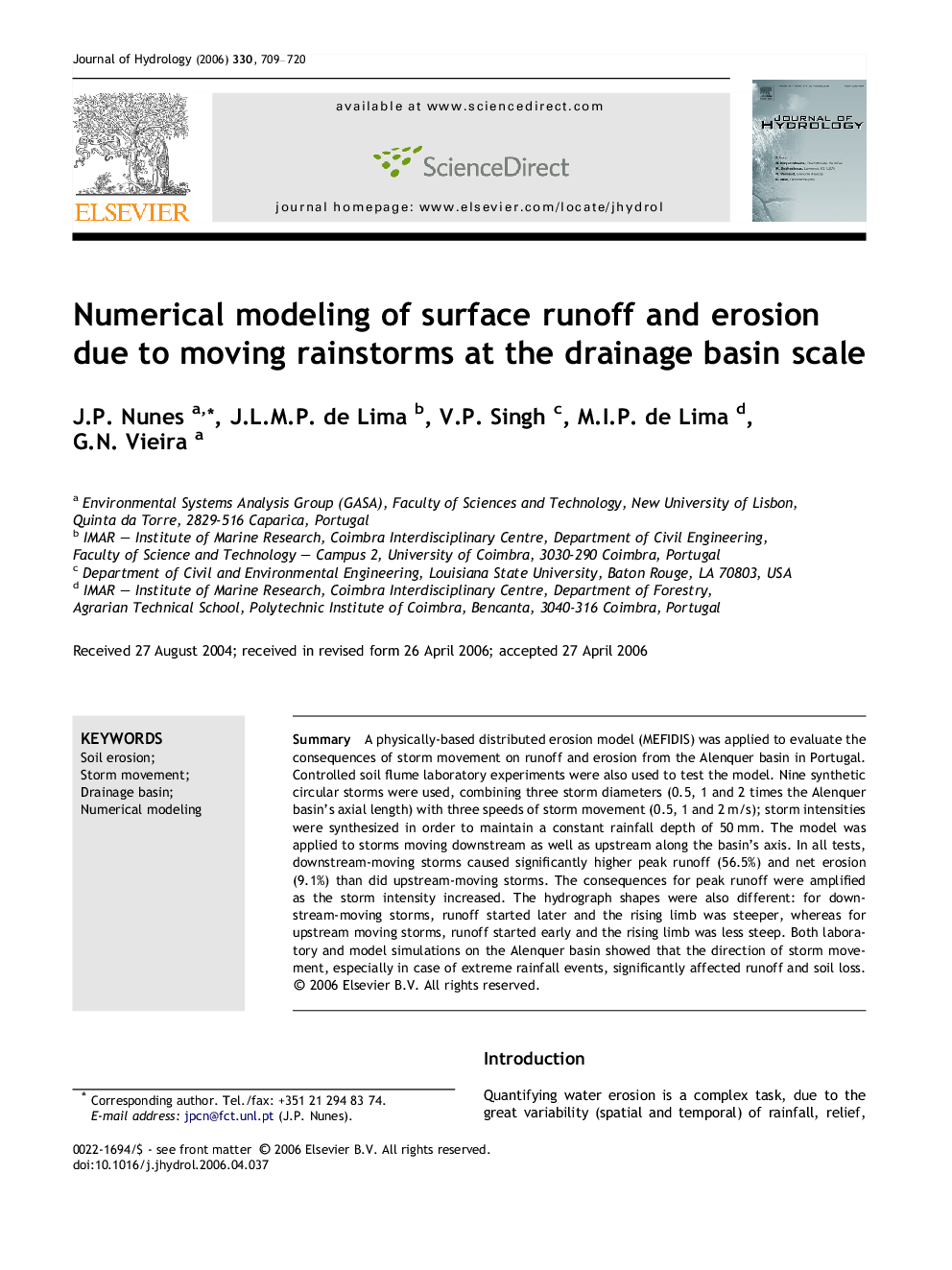| Article ID | Journal | Published Year | Pages | File Type |
|---|---|---|---|---|
| 4580437 | Journal of Hydrology | 2006 | 12 Pages |
SummaryA physically-based distributed erosion model (MEFIDIS) was applied to evaluate the consequences of storm movement on runoff and erosion from the Alenquer basin in Portugal. Controlled soil flume laboratory experiments were also used to test the model. Nine synthetic circular storms were used, combining three storm diameters (0.5, 1 and 2 times the Alenquer basin’s axial length) with three speeds of storm movement (0.5, 1 and 2 m/s); storm intensities were synthesized in order to maintain a constant rainfall depth of 50 mm. The model was applied to storms moving downstream as well as upstream along the basin’s axis. In all tests, downstream-moving storms caused significantly higher peak runoff (56.5%) and net erosion (9.1%) than did upstream-moving storms. The consequences for peak runoff were amplified as the storm intensity increased. The hydrograph shapes were also different: for downstream-moving storms, runoff started later and the rising limb was steeper, whereas for upstream moving storms, runoff started early and the rising limb was less steep. Both laboratory and model simulations on the Alenquer basin showed that the direction of storm movement, especially in case of extreme rainfall events, significantly affected runoff and soil loss.
